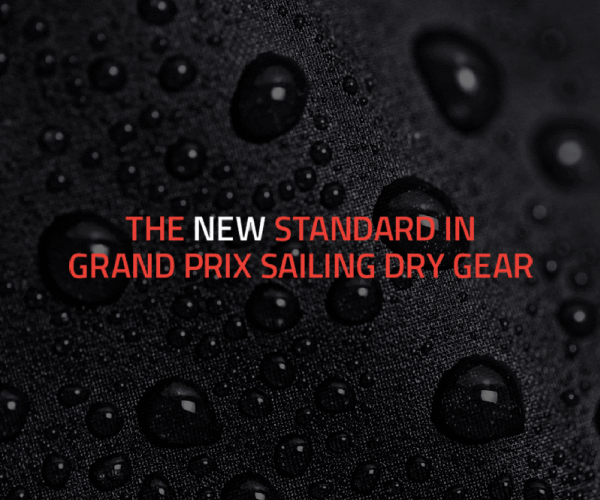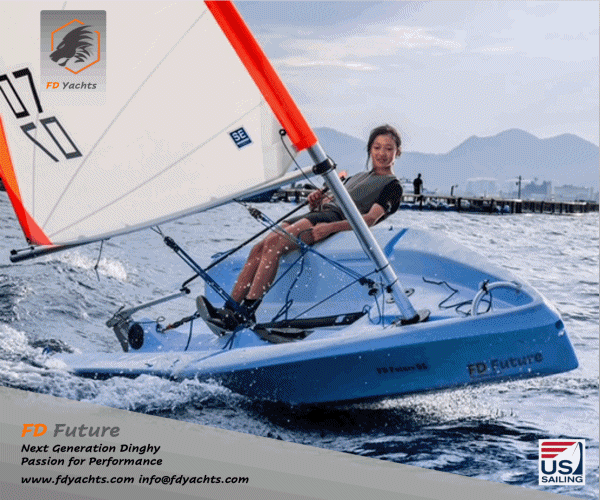Laser Start? |
Post Reply 
|
Page <1234 5> |
| Author | ||||
Jon711 
Far too distracted from work 

Joined: 04 May 07 Location: United Kingdom Online Status: Offline Posts: 465 |
 Post Options Post Options
 Quote Quote  Reply Reply
 Topic: Laser Start? Topic: Laser Start?Posted: 15 May 11 at 9:12am |
|||
|
I agree with Jeffers, but there is a need for more info. Just checked through the appeals book, and can find no match, unless there is something we are not being told...
Jon |
||||
|
Blaze 711
|
||||
 |
||||
gordon 
Really should get out more 
Joined: 07 Sep 04 Online Status: Offline Posts: 1037 |
 Post Options Post Options
 Quote Quote  Reply Reply
 Posted: 15 May 11 at 11:41am Posted: 15 May 11 at 11:41am |
|||
|
There are 2 probable scenarios:
It is extremely improbable that A was exactly head to wind . Head to wind is a very precise point, not a course that a boat can remain on for more than a very short time. The rules only mention passing head to wind (a transition) and a boat is only considered to have passed head to wind when it is clear that she has done so (using the principle of "last point of certainty). Unless there is very definite evidence it is safer to assume that A was somewhere between a closehauled course on starboard and the point where she had clearly passed beyond head to wind. The scenarios depend on how A got to this point of sailing Scenario 1: If A had luffed from a starboard close hauled course without passing head to wind she is still on starboard. B approaches from astern. B is keep clear boat (rule 12) B establishes an overlap to leeward and acquires right of way (rule 11). Rule 15 applies and B must give A room to keep clear. Room is the space needs in the existing conditions to manoeuvre in aseamanlike manner -which for a Laser stopped or sailing very slowly means room to bear away (more to full and by rather than close-hauled). If A does this promptly when B establishes the overlap (not before) than B must give A room to do so. If there is contact whilst A is acting promptly to keep clear then B has broken rule 15. 2 If A has clearly passed beyond head to wind and either returned to starboard tack (without reaching close hauled) or passed head to wind having been on port tack, but has yet to reach a starboard close-hauled course, then rule 13 applies and A is a keep clear boat. B does not acquire right of way when she establishes an overlap as she was already ROW boat (see rule 15). A must keep clear. However, if B changes course then rule 16.1 applies and B must give room to A to keep clear. Hope this is clear Gordon |
||||
|
Gordon
|
||||
 |
||||
blueboy 
Really should get out more 
Joined: 27 Aug 10 Online Status: Offline Posts: 512 |
 Post Options Post Options
 Quote Quote  Reply Reply
 Posted: 15 May 11 at 3:31pm Posted: 15 May 11 at 3:31pm |
|||
|
Gordon, would welcome an opinion on a related situation.
Prestart, keelboats L and W are overlapped, both on starboard, luffing and almost stationary. W is clear of L by around a foot and every time W goes up, L closes the gap again to maximise her own gap to leeward. At the gun, L bore away sharply, rotating around her keel and causing her stern to swing to windward and make contact with W. No damage resulted. I was W. It appeared to me I was making all possible effort to keep clear, particularly since every time I went up, L also went up and that L broke 16.1 (changed course to bear away and did not give me room to keep clear). L considered I broke rule 11. There was no protest. Thoughts? Edited by blueboy - 15 May 11 at 3:47pm |
||||
 |
||||
RS400atC 
Really should get out more 
Joined: 04 Dec 08 Online Status: Offline Posts: 3011 |
 Post Options Post Options
 Quote Quote  Reply Reply
 Posted: 15 May 11 at 8:14pm Posted: 15 May 11 at 8:14pm |
|||
|
Blueboy,
Contact without protest, both DSQ. I would say the windward boat's case sounds good. OP Whoever first used the word 'overtaking' gets DSQ'd and has to get a round in, unless of course the incident was after sunset. |
||||
 |
||||
gordon 
Really should get out more 
Joined: 07 Sep 04 Online Status: Offline Posts: 1037 |
 Post Options Post Options
 Quote Quote  Reply Reply
 Posted: 15 May 11 at 8:26pm Posted: 15 May 11 at 8:26pm |
|||
|
RC400atC
"Contact without protest, both DSQ." Under which rule of the 2009-2012 rules would a protest committee impose such a penalty Could you be thinking of rule 33.2 of a previous version of the rules that have not been applicable for at least 10 years! Gordon |
||||
|
Gordon
|
||||
 |
||||
RS400atC 
Really should get out more 
Joined: 04 Dec 08 Online Status: Offline Posts: 3011 |
 Post Options Post Options
 Quote Quote  Reply Reply
 Posted: 15 May 11 at 8:52pm Posted: 15 May 11 at 8:52pm |
|||
|
Basic Principle:
... a body off rules that they are expected to obey and enforce... A rule was broken, if you are in the right you should protest, if you are in the wrong or unsure you should accept a penalty. OK I admit my knowledge of R14 was out of date, that's why I read this forum, I've learned something, thanks! (10 years is not very long in terms of rules knowledge around Portsmouth, when did 'overtaking' leave the rule book?, I heard it from a sailing sec last month I do believe!) |
||||
 |
||||
gordon 
Really should get out more 
Joined: 07 Sep 04 Online Status: Offline Posts: 1037 |
 Post Options Post Options
 Quote Quote  Reply Reply
 Posted: 15 May 11 at 10:12pm Posted: 15 May 11 at 10:12pm |
|||
|
The rules were changed in 1997.
However, even in the old rules, valid at least since the 60s and probably since the 40s (some research needed) there was no mention of overtaking. The notion of overtaking boat comes from the Collision Regulations. The old rule 33.2 meant that a third boat could protest both boats for a minor contact and get them both DSQ'd, leading to vexatious protests. Under the present rules it is rare to protest only for breaking rule 14, because the rule gives some protection to the ROW boat. The keep clear boat will be DSQ'd for breaking another rule and rule 14 whereas the ROW boat will only be penalised under this rule if there was damage or injury. It is quite frequent that, to a third party, a rule appears to have been broken without a protest being called. Gordon Gordon |
||||
|
Gordon
|
||||
 |
||||
Brass 
Really should get out more 
Joined: 24 Mar 08 Location: Australia Online Status: Offline Posts: 1151 |
 Post Options Post Options
 Quote Quote  Reply Reply
 Posted: 16 May 11 at 1:54am Posted: 16 May 11 at 1:54am |
|||
Take a look at the definition of Keep Clear, last part:
With only 1 foot of separation, it seems quite likely that when L bore away, she immediately made contact, thus, just before L bore away, you were not keeping clear.
L can argue that, up until she bore away, while she was luffing, she was allowing you sufficient room to keep clear (evidenced by the fact that there was no contact up to that point). She can then argue that your failure to keep clear in breach of rule 11 the instant before she bore away (for which you deserve to be penalised) compelled her to contact you when she changed course away from the wind in breach of rule 16.1.
In a nutshell, you broke rule 11 first, before L broke rule 16.1, and L can argue that your breach caused her breach, and that she should be exonerated.
Normally the 'doing all W can' to keep clear notion applies to a hard, aggresive, continuous luff: can you really say you couldn't possibly have come up harder and made the gap bigger?
In the case of a gradual luff to build a cushion as you describe, L would be smart to say that her course consisted of a series of small luffs, puncutated by short periods of holding course while you responded, culminating with a period of holding course to allow you to get further away, before bearing away. W will usually find it very hard to refute this story.
|
||||
 |
||||
blueboy 
Really should get out more 
Joined: 27 Aug 10 Online Status: Offline Posts: 512 |
 Post Options Post Options
 Quote Quote  Reply Reply
 Posted: 16 May 11 at 5:27am Posted: 16 May 11 at 5:27am |
|||
Nope, because there was no damage. 14(b).
Yes, because in this class, when you change course the boat essentially rotates around the fin keel. His stern came up towards my stern as he bore away and the contact was at the stern quarter. If I luffed, my stern would turn towards his. For a period at least there would be less room, not more. Conceivably, I might have avoided contact by bearing away, not luffing more, but then there may have contact elsewhere e.g. between rigs.
I would however argue that he could have beared away with the space remaining, just not so sharply as he chose to do. Before he bore away, I was keeping clear. So to what extent did I need to anticipate his bearing away?
Not particularly my choice since any more was immediately filled by L. However I've sailed a variety of keelboat classes and a foot of separation on an aggressive startline is, like it or not, pretty normal. I'd agree however that I don't know how this would have played out in a protest room. Neither, apparently, did he! We had a subsequent polite but tense exchange of views on the incident and I'm fairly sure if he was confident he'd win a protest he would have filed one. Edited by blueboy - 16 May 11 at 6:03am |
||||
 |
||||
RS400atC 
Really should get out more 
Joined: 04 Dec 08 Online Status: Offline Posts: 3011 |
 Post Options Post Options
 Quote Quote  Reply Reply
 Posted: 16 May 11 at 8:41am Posted: 16 May 11 at 8:41am |
|||
|
If a witness had protested both boats what would have been the outcome?
|
||||
 |
||||
Post Reply 
|
Page <1234 5> |
| Forum Jump | Forum Permissions  You cannot post new topics in this forum You cannot reply to topics in this forum You cannot delete your posts in this forum You cannot edit your posts in this forum You cannot create polls in this forum You cannot vote in polls in this forum |
Bulletin Board Software by Web Wiz Forums® version 9.665y
Copyright ©2001-2010 Web Wiz
Change your personal settings, or read our privacy policy
Copyright ©2001-2010 Web Wiz
Change your personal settings, or read our privacy policy














-(1)-202408140552.gif)









 Printable Version
Printable Version Delicious
Delicious Digg
Digg Facebook
Facebook Furl
Furl Google
Google MySpace
MySpace Newsvine
Newsvine reddit
reddit StumbleUpon
StumbleUpon Twitter
Twitter Windows Live
Windows Live Yahoo Bookmarks
Yahoo Bookmarks Topic Options
Topic Options